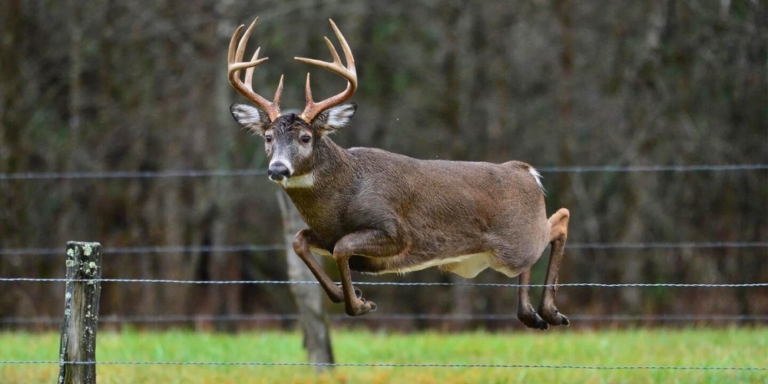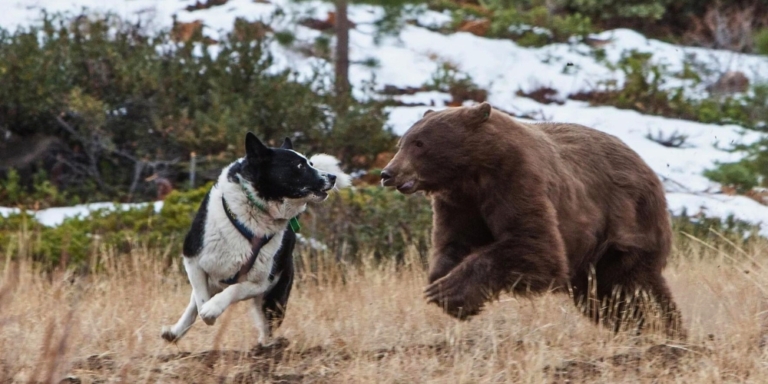The “worst invasive large mammals on the planet” are lurking in the woods near Jasper National Park. Strong words from a Saskatchewan scientist who says the four-legged beasts threaten to eat everything in their path.
The culprits he is referring to are none other than wild pigs.
These hungry hogs might not sound threatening, but their presence spells trouble.
Wild pigs, also called wild boar, are an invasive species in Alberta. An invasive species is an animal that is not originally from the area.
Wild boar are not native to our province; they came here in the 1980s and 1990s as livestock.
Due to a lack of containment requirements, many domestic pigs escaped from livestock operations and started breeding in the wild.
Since then, wild pigs have wreaked havoc across the province.
How Bad Can Wild Pigs Be?
Bad enough for Professor Ryan Brook to call wild pigs ”the worst invasive large mammal on the planet.”
University of Saskatchewan Professor Brook leads the Canadian Wild Pig Research Project, which studies the ecology and distribution of wild pigs in Canada.

Professor Brook claims wild pigs are spreading fast and causing much damage.
In Texas, where he went to study them firsthand, he saw areas where they had destroyed everything, leaving no birds, insects, or other small animals.
“The silence was deafening. Anything from about five feet high down was just gone. There was virtually no living material of any kind,” Professor Brook recalls.
These pigs dig up the ground, making it easy for weeds to grow and destroying the habitat for other animals.
These pigs are not only harmful to the environment but also dangerous. They eat ground-nesting birds and their eggs, small mammals, and even baby deer, elk, caribou, and moose.
They’re aggressive, scaring away other animals with their sharp tusks.
Since wild pigs don’t have sweat glands, they roll around in the mud to keep cool. Because of this, wild pigs can contaminate water with feces and urine containing high levels of Salmonella, E. coli, and other harmful bacteria.
Even worse, they breed like bunnies.
Professor Brook explains that wild pigs reproduce very quickly, which makes controlling them hard. He shared a story about 11 pigs that escaped from a truck and grew to more than 130 in just three years.
Pigs in the Park?
The wild pig problem is so severe that Professor Brook thinks it’s only a matter of time before these pigs appear in mountainous regions like Jasper.
“The potential for it to go from nothing to being a major out-of-control problem is very, very real. It has happened and continues to happen every day in Canada,” Brooks explained.
He worries that wild pigs may have already infiltrated Jasper National Park, which spans more than 11,000 square kilometres.
The presence of wild pigs in the Park is bad news because Jasper is home to many threatened and endangered species. This includes woodland caribou, Olive-sided Flycatcher, common nighthawk, and more. All of these species are menu items for wild pigs.
Climate changes already affect wildlife, vegetation, freshwater, and natural processes in Jasper.
Throw wild pigs into the mix, and you have a recipe for disaster.

Managing Wild Pigs?
Contrary to popular belief, hunting wild boar does not effectively control their numbers.
Rather than reducing their population, hunting can inadvertently increase it. Wild pigs are highly fertile, producing up to 6 piglets twice a year. And anytime pigs are hunted, pigs initiate breeding behaviour to fill the void.
Hunting pressures also cause wild pigs to become secretive, making them more difficult to find and hunt.
Instead of hunting, Megan Evans, who works with the Alberta Invasive Species Council, points to the province’s strategic trapping program.
The trapping method helps catch all the pigs in a group, which is crucial for completely eliminating them. Evans believes this is the best way to eradicate wild pigs from the province.
Our own irresponsible management of our farm animals caused our ongoing piggy predicament.
The rapidly growing wild pig population shows why proper management strategies are essential.
Humans have caused the pig population problem, and humans need to put in preventative measures to protect our parks.





